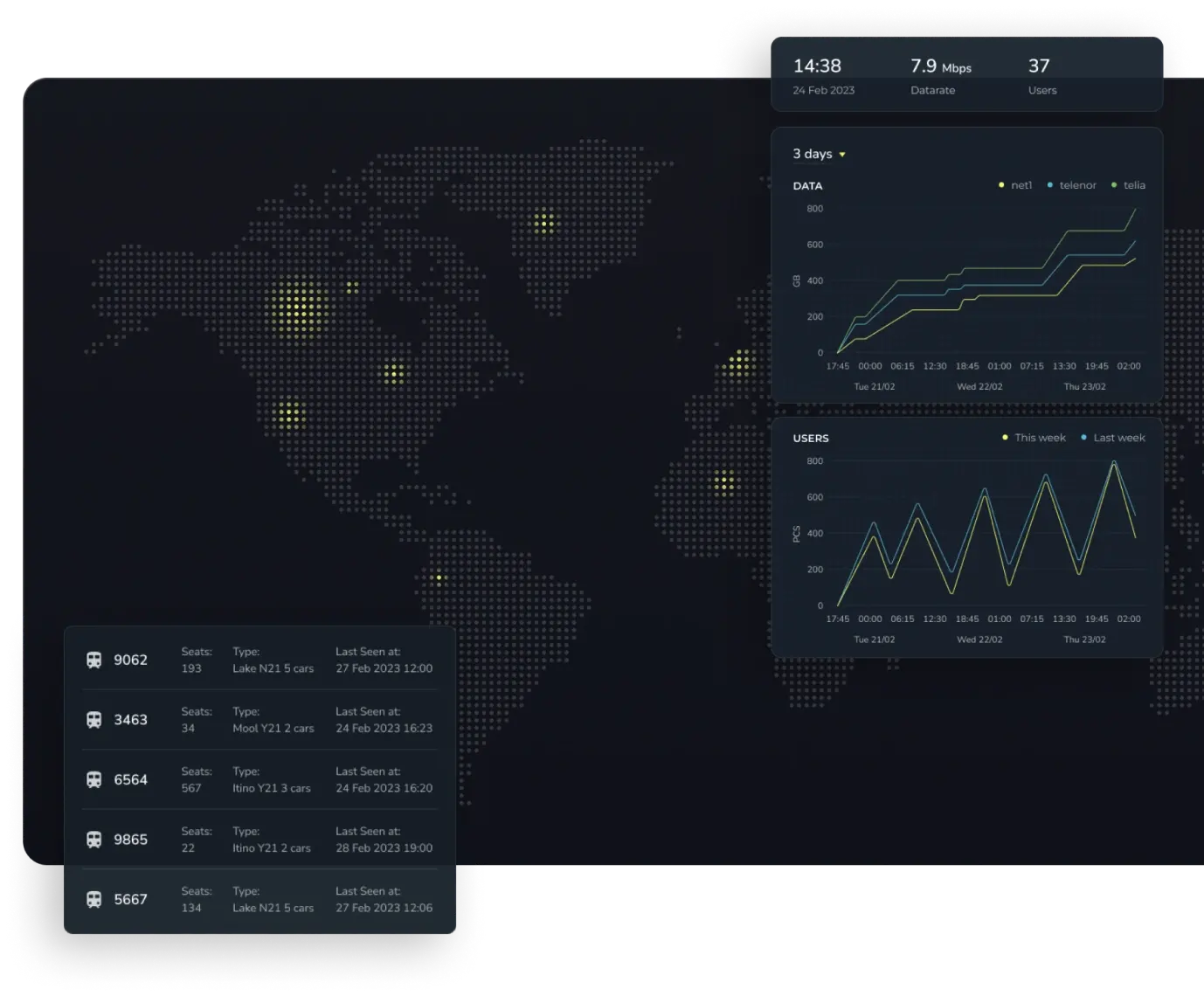The use of tracking systems for the optimization of vehicle fleet operations is one of the most promising areas today and in the foreseeable future. Specialized solutions consolidate transportation processes and boost the efficiency and safety of vehicle use, ultimately stimulating business growth and preventing the misuse of vehicles and fuel.
Three years ago, the global GPS vehicle tracking devices market was estimated at $17 billion. By 2030, its volume is expected to grow more than six times and reach almost $110 billion! Most of it will cover satellite monitoring systems. There are more and more people who want to use them every day, so this is a profitable area for companies involved with specialized software.
At Requestum, we have our own view on the creation and use of such systems. Let’s talk about the process of their development, from idea to final implementation.

Under the Hood of a GPS System For Vehicle Tracking
We are talking about satellite tracking of the coordinates of drivers and cars online. Monitoring of the technical condition of vehicles is carried out using standard and additionally installed sensors. The system provides an indication of alarm signals and the identification of cars that are closest to a given object. The processed results are displayed on the map of the area on the dispatcher's terminal.
A common system package usually includes:
- GPS beacon ─ a sensor designed to determine the coordinates of the vehicle and its main parameters using satellite signals;
- Telematics server ─ a web hub for wireless reception, transformation, and structuring of received information;
- Database ─ a solution for storage and issuance of information about controlled objects.
- Analytical module ─ analyzes information from the database according to commands from client programs (requests for odometer readings, fuel consumption, and other activities).
- Client software ─ a map module and user interaction interfaces that provide remote operational control over the movement and parameters of vehicles.
Learn how GPUs solve complex routing challenges
A GPS tracking system is a distributed hardware and software complex. The main functions of the client software are monitoring, operational management, solving route problems, as well as control and analysis with advanced reporting.
Dedicated solutions can work actively (in a real time) or passively (recording the object's position at certain intervals). In the second case, additional memory is required.
Developing a Vehicle GPS Tracking System
While the benefits of an app or tracking system are obvious, their development requires skill. The whole process includes several stages:
- Idea formation
- Prototyping
- UI/UX development
- Programming stage
- Installation and setup
- Launch and testing
- Product support
The task requires appropriate hardware and software solutions.
Picking hardware
All in all, you will need the following:
- A microcontroller (MCU);
- GPS modules;
- A relay scheme;
- A monitor
If you want to track multiple objects, you must implement an architecture that includes a web application, a back end, and a database.
Case Study: Real-Time Asset Visualization Tool

The underlying software should send the command to the modem, which processes it and passes it on to the MCU, which passes it on to a web page or application that will display the object's location on a virtual map.
Software development
The most important task at this stage is to ensure the scalability of a GPS vehicle tracking system you build. Pay attention to the following:
Tech stack
The internal low-level functionality is usually written in C. You can use Python, JavaScript, React, PHP, .NET, Ruby, or a SaaS environment. The key is to keep your tools flexible, including the server. Especially if a cross-platform user system is planned.
Cloud systems can scale faster because they allow additional server capacity to be quickly added as workloads increase.
Software architecture
The architecture should be built in such a way as to optimize the use of resources. Higher-level features such as geofences, automatic alerts, visual representations, and route optimization use languages based on the selected platform:
- Android: Kotlin and Java;
- iOS: Objective-C or Swift;
- Web: front end ─ JavaScript with HTML/CSS, back end ─ Node.js or Ruby
Using the API, you can also integrate with third-party services such as Google Maps, Instamapper (free), or AccuTracking (paid).
Functionality
The application must be able to collect, store, and process information from physical sensors and generate reports on the entire transportation scheme. These can be road conditions, vehicles used, driver behavior, fuel efficiency, incidents, etc.
A vehicle tracking system must provide stable communication between the dispatcher and the driver. It can connect and centralize the management of tachometers, sensors for monitoring engine temperature, open doors, and the presence of passengers in the cabin. Connecting the ignition system allows you to control the engine running time. On top of that, an app should be able to interact with non-standard systems:
- Email platforms for alerts;
- GSM to communicate with the dispatcher and call emergency services;
- Anti-theft measures;
- Logistics;
- Processing of transport documentation;
- Analytics
You can also connect any other mechanisms and protocols that provide the required efficiency of fleet management. In addition, vehicle tracking GPS systems may transmit some data to tax software. Often, they are integrated with other EPRs, as well as boosted with artificial intelligence and the Internet of things.
If we are talking about an application for a taxi or carsharing service, then user applications can be divided into two categories: for drivers and for customers. The functionality of the former should allow easy acceptance of client requests and dispatcher calls. It should show on the map the pick-up point and destination with an estimated fare.
The second should be tabbed with input fields for easy checkout. Each client profile must be assigned a unique key/access code registered by the admin panel. When a car approaches them, their application should notify them timely. It should also indicate the route and the estimated cost of the trip (there should be a calculator) and accept payments (preferably in several ways).
Let’s craft the perfect software solution for your business
Deployment and testing
At this stage, all parts of the system are brought together so that they can be used in the field. In order to eliminate possible user issues as much as possible, the application must be carefully checked for errors and bugs and optimized accordingly.
Support
Not even the best GPS tracking system for vehicle management will be able to function error-free for a long time without your participation. You'll have to maintain server-side components, constantly work on updating the user interface based on your driver feedback, and add new features.
Finally, with the growth of the business, it will have to be scaled and modernized accordingly. If you choose the right architecture, hardware components, software environment, and development tools, this will be much easier to do.
Bottom Line
Satellite monitoring is a profitable investment. You can do it yourself or find developers matching your goals and needs.
For one thing, we have been successfully developing such projects for the longest time to now offer exceptionally high-quality services and products. Are you looking to set up high-performance GPS tracking for vehicles? Contact us to turn your bold ideas into a powerful system to outrun your competitors!

Our team is dedicated to delivering high-quality services and achieving results that exceed clients' expectations. Let’s discuss how we can help your business succeed.


SHARE: